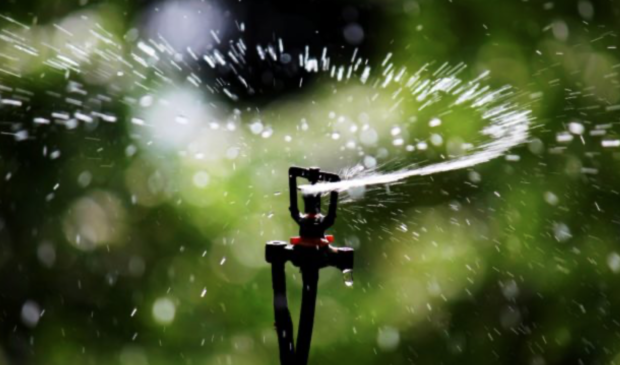Amid drought conditions, Austin Water proposes ways to slash water use in new homes
Wednesday, November 23, 2022 by
Andrea Guzman The average water use per year in new Austin homes is 28,000 gallons. But that could soon decrease with initiatives aimed at conserving water through landscape transformations and other efforts.
Kevin Kluge, environmental conservation division manager of Austin Water, presented possible ordinances on home landscapes during a Resource Management Commission meeting last week.
Improving water conservation is an urgent task for the utility company. This winter is expected to see lower precipitation and above normal temperatures, and even with recent rain, the supply levels of Lake Buchanan and Lake Travis are just over 50 percent full.
Kluge offered some ideas involving landscape changes and alternative water sources. The Water Forward plan had scheduled the transformation of traditional landscapes of single-family homes to landscapes that require less drinking water for irrigation in 2025. But last May, City Council directed Austin Water to accelerate its implementation.
“Beyond the plan and the Council directive, there is a basic necessity of Austinites continuing to be more water efficient,” Kluge said. “The only way we can meet our water efficiency sustainability goals going forward is if every resident and business, on average, uses a little bit less water next year than they did this year, and on and on into the future, always becoming a little bit more efficient.”
The route to accomplishing that is by enhancing environmental inspections to ensure soil and compost requirements are being met, requiring new homes to have plants from a list of native or adaptive plants, and limiting the amount of turf in the landscapes of new homes.
Limiting irrigated lawns to 50 percent of the landscaped area could save more than 4,000 gallons per year in each household, Kluge said.
This tactic would replace turf with beds that are estimated to cost builders and homeowners an additional $8,700 per house.
Another suggestion is limiting irrigation area in homes to half of the possible landscaped area, which could bring a drastic reduction in water use, an estimated 9,800 gallons annually per home. The cost, Kluge said, might be $71 for an enhanced irrigation inspection.
These proposals come after Council members had previously shared concern that water conservation efforts could make development more expensive, and costs are still top of mind.
Commissioner Kaiba White expressed her support. “I think it’s definitely the right direction to move in. I was a little surprised to hear that $8,000 number.”
She said she converted her front yard to add more native plant space and it didn’t require $8,000. She suggested sharing a range of costs for those who want the work done in an affordable way as well as for those who want more extravagance.
Commissioner Charlotte Davis said if there is turf grass, even if it’s planted with half irrigation, some water will still be required.
“I’m just wondering how much is saving water and how much is just shifting the burden of that water onto the homeowner?”
Kluge noted that lots of watering on the homeowner’s part might not be needed.
“One of the things that we’re blessed with here in Central Texas is that you don’t necessarily have to irrigate your lawn for much of the year,” he said.
He went on to say the difference in water use with drip irrigation versus using a hose is significant.
“Irrigation systems are very good at what they do and they put out a lot of water,” he said. “So someone using a hose, even if they’re watering that occasionally, the area of their yard without an irrigation system is still going to use a lot less water.”
The utility plans to meet with the Water and Wastewater Commission and draft ordinance language that will undergo an affordability and legal review next month. Eventually, the ordinance will reach Council before its summer recess.
Photo made available through a Creative Commons license.
The Austin Monitor’s work is made possible by donations from the community. Though our reporting covers donors from time to time, we are careful to keep business and editorial efforts separate while maintaining transparency. A complete list of donors is available here, and our code of ethics is explained here.
You're a community leader
And we’re honored you look to us for serious, in-depth news. You know a strong community needs local and dedicated watchdog reporting. We’re here for you and that won’t change. Now will you take the powerful next step and support our nonprofit news organization?










